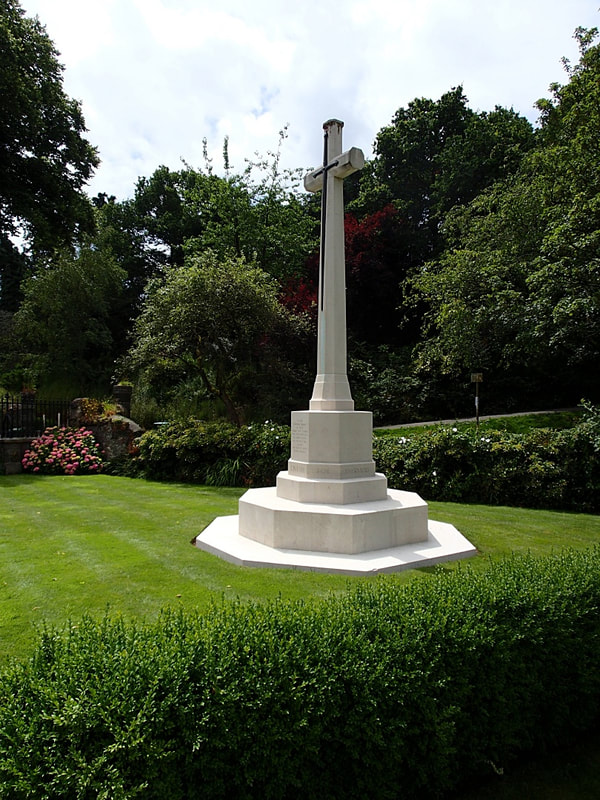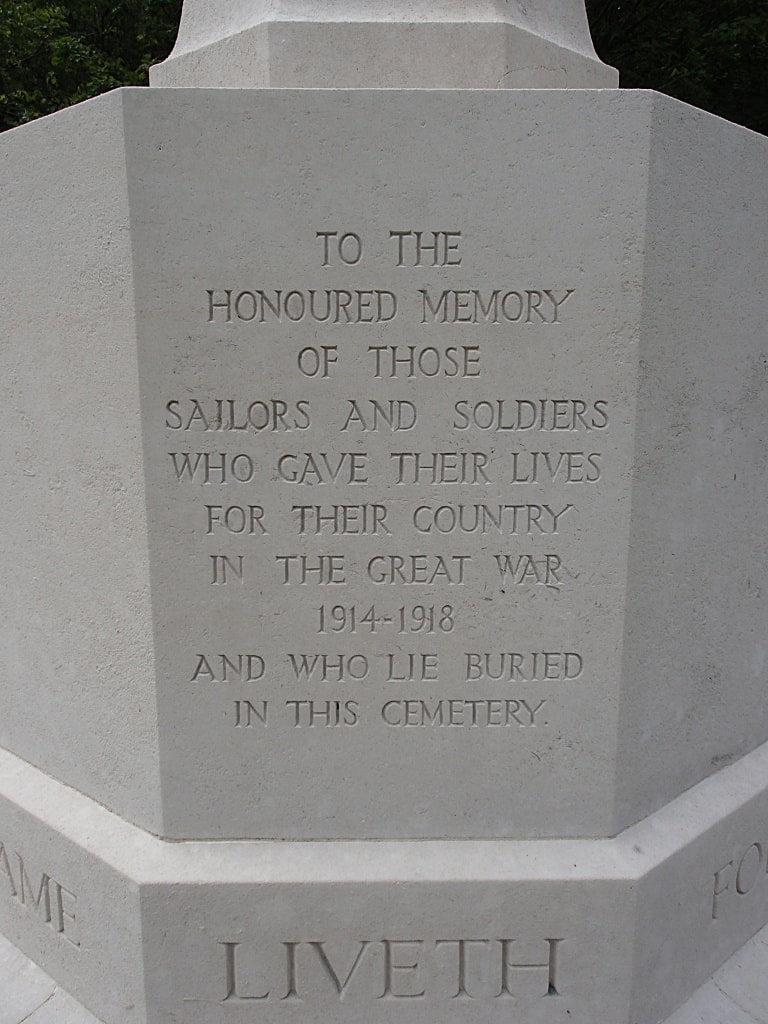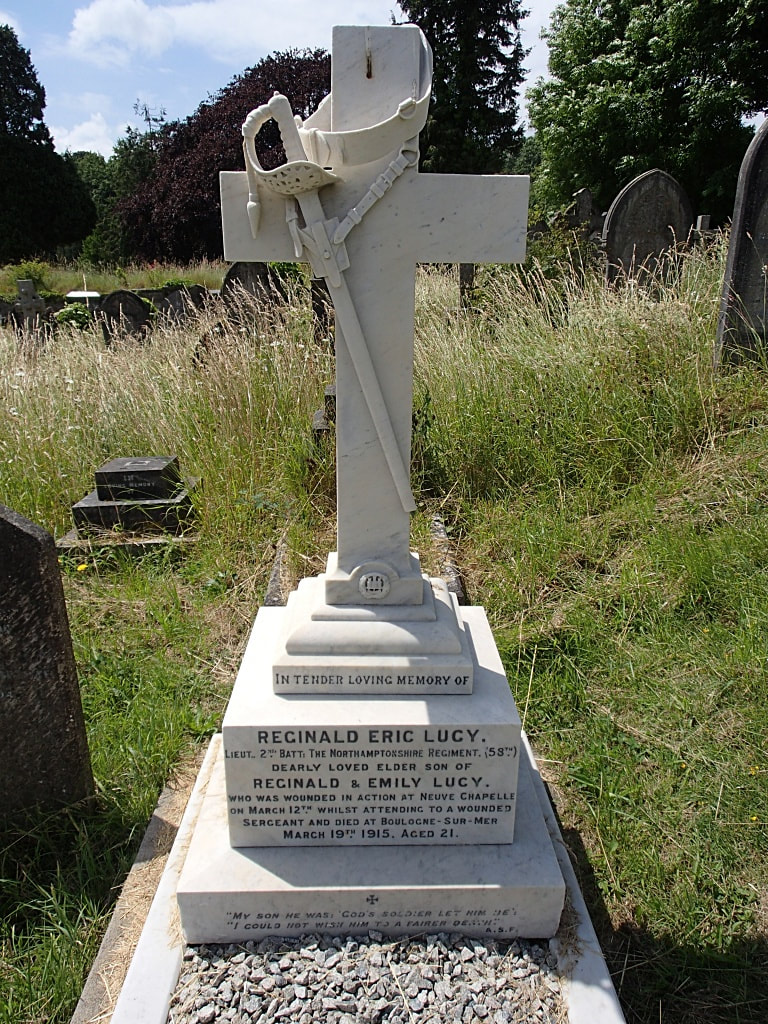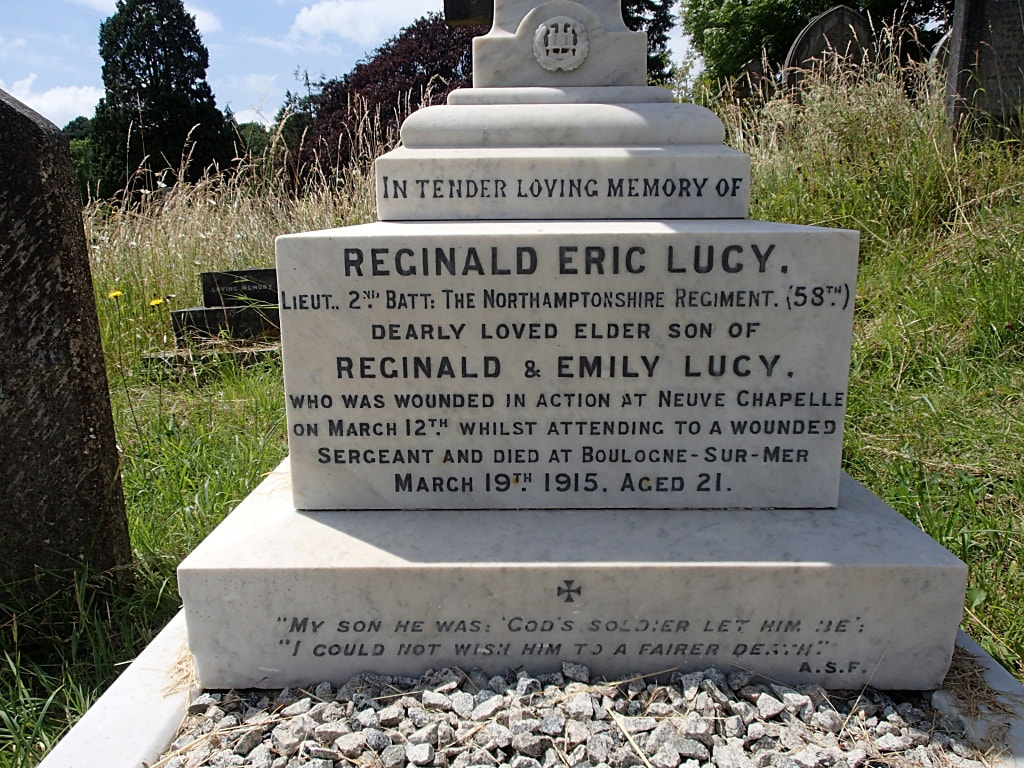PLYMOUTH (FORD PARK) CEMETERY
Devon
England
GPS Coordinates: Latitude: 50.38129, Longitude: -4.14456
Location Information
Ford Park Cemetery is located to the North of the City Centre close to Central Park and Plymouth Argyle F. C.
Visiting Information
The cemetery is owned and managed by the Ford Park Cemetery Trust. They open it from 0900 to 1800 during the summer months and from 0900 to 1530 during the winter months.
History Information
During the First World War, Plymouth, Devonport and Stonehouse contained between them the Royal Dockyard, Royal Naval Barracks (known as H.M.S. Vivid), the Royal Marine Barracks of the Plymouth Division, and naval and military hospitals. For the duration of the war, Devonport was made headquarters of the Auxiliary Patrol Area.
Plymouth was a naval station second only to Portsmouth during the Second World War. Devonport was also an important military station and there was a R.A.F station at Mount Batten, opposite Plymouth.
Ford Park Cemetery (formerly known as Pennycomequick or Plymouth Old Cemetery) contains 771 burials of the First World War, more than 200 of them in a naval plot, the rest scattered throughout the cemetery. All of the 198 Second World War burials are scattered, 1 of which is an unidentified airman of the Royal Air Force. In addition, the Commission maintains 1098 non war service burials (on behalf of the MOD) and 3 French and 2 Russian graves here.
Total Commission Burials: 2,067.
World War One Identified Casualties: United Kingdom 755, Canada 11, Australia 4, Russia 2, New Zealand 1, South Africa 1. Total 774.
World War Two Identified Casualties: United Kingdom 197.
Ford Park Cemetery is located to the North of the City Centre close to Central Park and Plymouth Argyle F. C.
Visiting Information
The cemetery is owned and managed by the Ford Park Cemetery Trust. They open it from 0900 to 1800 during the summer months and from 0900 to 1530 during the winter months.
History Information
During the First World War, Plymouth, Devonport and Stonehouse contained between them the Royal Dockyard, Royal Naval Barracks (known as H.M.S. Vivid), the Royal Marine Barracks of the Plymouth Division, and naval and military hospitals. For the duration of the war, Devonport was made headquarters of the Auxiliary Patrol Area.
Plymouth was a naval station second only to Portsmouth during the Second World War. Devonport was also an important military station and there was a R.A.F station at Mount Batten, opposite Plymouth.
Ford Park Cemetery (formerly known as Pennycomequick or Plymouth Old Cemetery) contains 771 burials of the First World War, more than 200 of them in a naval plot, the rest scattered throughout the cemetery. All of the 198 Second World War burials are scattered, 1 of which is an unidentified airman of the Royal Air Force. In addition, the Commission maintains 1098 non war service burials (on behalf of the MOD) and 3 French and 2 Russian graves here.
Total Commission Burials: 2,067.
World War One Identified Casualties: United Kingdom 755, Canada 11, Australia 4, Russia 2, New Zealand 1, South Africa 1. Total 774.
World War Two Identified Casualties: United Kingdom 197.

J/50299 Signalman
George Redvers Victor Slater
H. M. S. Vivid, Royal Navy
30th September 1918, aged 18.
Church P. 17. 56.
Son of the Rev. Frederick George and Sarah Jane Slater, of Ince Vicarage, Birkenhead. Native of North Rode, Congleton.
His headstone bears the inscription Late Of Ince Vicarage Cheshire "Death Is Swallowed Up In Victory"
The information below supplied by 'The Ellesmerian Club', the alumni organisation for Ellesmere College where George was a pupil.
George Redvers Victor Slater
H. M. S. Vivid, Royal Navy
30th September 1918, aged 18.
Church P. 17. 56.
Son of the Rev. Frederick George and Sarah Jane Slater, of Ince Vicarage, Birkenhead. Native of North Rode, Congleton.
His headstone bears the inscription Late Of Ince Vicarage Cheshire "Death Is Swallowed Up In Victory"
The information below supplied by 'The Ellesmerian Club', the alumni organisation for Ellesmere College where George was a pupil.
George Redvers Victor Slater, one of seven children of the Reverend George Slater and his wife, Sarah Jane, was born in Macclesfield, Cheshire on 28th February 1900.
He entered Ellesmere College on 17th June 1912, taking up residence in the ‘Arthur’ dormitory where he stayed for the next three years.
There are very few references to his achievements during his residence but he was active on the sports field, playing cricket, hockey and rugby for either his dormitory or college teams. He was a member of the Officer Training Corps.
George left Ellesmere in July 1915 and it was only seven months later that he enlisted on 1st February 1916, joining the Royal Navy.
His naval career started with his initial training as a ‘Boy II’ No: J 50299 on H.M.S. ‘Powerful’, which had been one of the largest cruisers ever built when she and her sister ship H.M.S. ‘Terrible’ were commissioned in 1895. She saw many years service in China and was involved in the relief of Ladysmith before being put into the reserve fleet and used as a training vessel.
George transferred to H.M.S. ‘Ganges’ (shore establishment) in May 1916 and by August he had been promoted ‘Signal Boy’. In September, he transferred again, this time to H.M.S. ‘Victory’ (Portsmouth Barracks) for three months. In early December he joined H.M.S. ‘Hercules’ (Admiral Sturdee’s flagship of some 20,000 tons with a crew of 750 officers and men) where he was to remain until March 1918. During his time on board he saw action against the German High Seas Fleet and he had attained the rank of ‘ordinary signaller’.
From April to July 1918 he served as a ‘Signaller’ on H.M.S. ‘Calliope’, a ‘C’ class light cruiser, the flagship of the 4th Light Cruiser Squadron. It was his vigilance that, on one occasion, saved the ship from a torpedo attack and he was personally commended for his actions by his Commander.
On leaving ‘Calliope’ he served for a month back on ‘Hercules’ before embarking on his last posting to H.M.S. ‘Vivid’. Throughout his service, his service records show his character as ‘Good’ and his ability as ‘Superior’.
He died, a victim of the influenza epidemic, on 30th September 1918 at the Royal Naval Hospital, Plymouth and was buried in the Plymouth Devonport & Stonehouse Cemetery, Plymouth, Devon. He was awarded the “Victory” and “British War” Medals.
He entered Ellesmere College on 17th June 1912, taking up residence in the ‘Arthur’ dormitory where he stayed for the next three years.
There are very few references to his achievements during his residence but he was active on the sports field, playing cricket, hockey and rugby for either his dormitory or college teams. He was a member of the Officer Training Corps.
George left Ellesmere in July 1915 and it was only seven months later that he enlisted on 1st February 1916, joining the Royal Navy.
His naval career started with his initial training as a ‘Boy II’ No: J 50299 on H.M.S. ‘Powerful’, which had been one of the largest cruisers ever built when she and her sister ship H.M.S. ‘Terrible’ were commissioned in 1895. She saw many years service in China and was involved in the relief of Ladysmith before being put into the reserve fleet and used as a training vessel.
George transferred to H.M.S. ‘Ganges’ (shore establishment) in May 1916 and by August he had been promoted ‘Signal Boy’. In September, he transferred again, this time to H.M.S. ‘Victory’ (Portsmouth Barracks) for three months. In early December he joined H.M.S. ‘Hercules’ (Admiral Sturdee’s flagship of some 20,000 tons with a crew of 750 officers and men) where he was to remain until March 1918. During his time on board he saw action against the German High Seas Fleet and he had attained the rank of ‘ordinary signaller’.
From April to July 1918 he served as a ‘Signaller’ on H.M.S. ‘Calliope’, a ‘C’ class light cruiser, the flagship of the 4th Light Cruiser Squadron. It was his vigilance that, on one occasion, saved the ship from a torpedo attack and he was personally commended for his actions by his Commander.
On leaving ‘Calliope’ he served for a month back on ‘Hercules’ before embarking on his last posting to H.M.S. ‘Vivid’. Throughout his service, his service records show his character as ‘Good’ and his ability as ‘Superior’.
He died, a victim of the influenza epidemic, on 30th September 1918 at the Royal Naval Hospital, Plymouth and was buried in the Plymouth Devonport & Stonehouse Cemetery, Plymouth, Devon. He was awarded the “Victory” and “British War” Medals.










